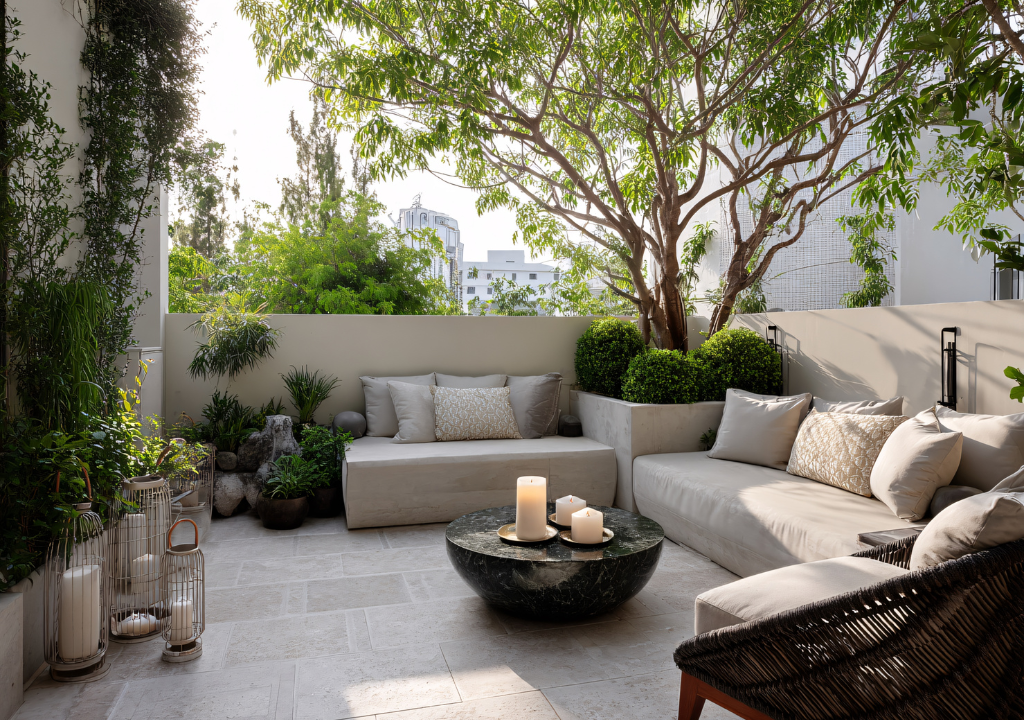ADU Knowledge
October 23, 2025
Maximize Your Space in a 100-Sq-Ft Tiny House Floor Plan in Georgia?

.png)
Schedule a free appointment with one of our ADU experts.
Get ADU QuoteOr call: (323) 591-3717
The best way to maximize space in a 100 sq ft tiny house in Georgia is by combining vertical storage, multi-functional furniture, and open layouts. Moreover, these innovative techniques create an illusion of spaciousness. Also, natural light, simple style, and hidden storage help the living area. They make it worthwhile, cozy, and easy to change for daily needs.
At Gather ADU, we specialize in designing compact, stylish homes tailored for Georgia’s modern lifestyle. Our expert team blends practicality with beauty, ensuring every inch has a purpose. Consequently, our designs feel bright, welcoming, and functional. We change small spaces into modern, usable homes. These homes offer comfort and good value for years. We do this easily.
The most innovative layout for a 100 sq ft tiny home in Georgia uses an open-concept design. This layout combines cooking, dining, and sleeping areas into one cohesive space. Furthermore, built-in furniture and hidden storage improve functionality. The result is that homeowners can move freely. They also get better storage and an easier, calmer life at home.
Well-planned layouts merge efficiency with comfort. Additionally, you can use beds that fold out, tables that slide, and high sleeping areas. This saves room and makes things easier for you. Natural light and clean lines enhance calmness and visual flow. Therefore, this easy-to-use plan is a great fit for Georgia homeowners. It works for those who want a simple, practical, and stylish home in a small space.

To design efficient zones in a tiny home, use open shelving to divide spaces without blocking light. Furthermore, use furniture instead of walls to separate cooking, living, and sleeping areas. This approach encourages better light flow and organization. Consequently, your home feels larger, more balanced, and easier to navigate during daily routines.
Here are the important zoning tips:
Proper zoning maximizes comfort and functionality. Additionally, it maintains structure without sacrificing openness. By combining thoughtful planning and design flow, every corner of your Georgia home becomes purposeful. Therefore, even 100 square feet can transform into a highly organized and inviting living space perfect for daily living.
To increase storage without losing space, use built-ins, vertical shelving, and hidden compartments. Moreover, Drawers under the bed, high storage, and organizers on the wall help a lot. They make small homes feel open but still very useful. These strategies not only reduce clutter but also improve accessibility. Consequently, you gain both function and freedom in your Georgia tiny home.
These are space-saving storage Ideas:
Integrated storage solutions create balance and clarity. Furthermore, they prevent clutter while maintaining visual openness. As a result, every inch of your small 100 sq ft Georgia home has a job. This lets owners enjoy a simple, cozy, and valuable home for a long time. The space is both beautiful and works well.

Lighting plays a vital role in shaping small-space design. Sunlight from windows and skylights makes rooms look bigger. LED and hidden lights also make things brighter. Furthermore, layering ambient and task lighting enhances warmth and comfort. Therefore, a well-lit 100 sq ft Georgia home feels larger, more open, and beautifully balanced.
Lighting Design Tips:
Thoughtful lighting enhances both beauty and functionality. Additionally, it improves visibility and mood. As a result, Georgia homeowners experience improved energy efficiency and a sense of openness. Consequently, the proper lighting setup turns compact homes into brighter, more inviting spaces that promote relaxation and comfort.

Building a 100 sq ft tiny home in Georgia can feel challenging. High costs, zoning restrictions, and limited space often cause frustration. Furthermore, poor design decisions can make layouts cramped and inefficient. Without expert help, these mistakes reduce comfort, usability, and the overall return on your home investment.
At Gather ADU, we turn small-space challenges into opportunities for innovative design. Our experienced team creates efficient, elegant layouts tailored for Georgia living. Additionally, we manage every detail from planning to completion. Consequently, homeowners enjoy compact homes that deliver comfort, style, and lasting value all perfectly optimized for modern life.
The ideal layout includes an open-concept plan, a lofted sleeping zone, and built-in storage. Additionally, bright colors and large windows expand visual space. Therefore, these elements enhance light flow and comfort, ensuring your Georgia tiny home feels efficient, cozy, and welcoming year-round.
Use mirrors, bright walls, and open layouts to expand space. Additionally, natural light enhances depth and airiness. As a result, compact Georgia homes feel bigger, more colorful, and more functional. Every design choice contributes to comfort, flow, and an inviting atmosphere throughout the living space.
Lightweight and durable materials such as wood, metal, and composite panels work best. Furthermore, bamboo or recycled materials reduce maintenance costs. Consequently, Georgia homeowners gain sustainable strength, style, and long-lasting quality in tiny homes built for efficiency and modern-day durability.
The cost typically ranges between $25,000 and $50,000. Prices depend on materials and customization. However, smart planning and expert design help lower costs. Consequently, homeowners achieve beautiful, functional, and affordable living spaces suited for Georgia’s lifestyle and budget.
Yes, full-time living is possible with proper design and comfort planning. Efficient zoning, insulation, and multifunctional layouts enhance livability. Furthermore, good lighting and organization improve flow. Therefore, Georgia residents can enjoy year-round comfort in compact homes built for long-term sustainable living.
.png)
Not sure where to start with your ADU project?